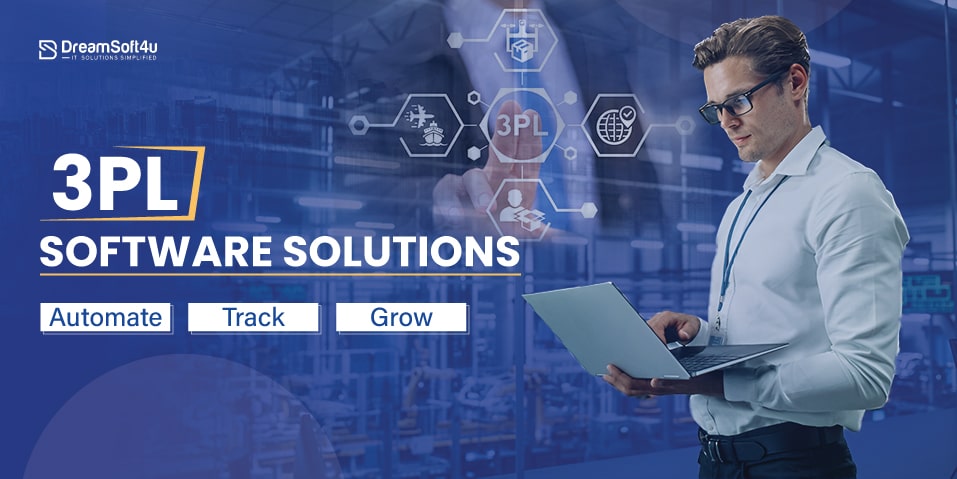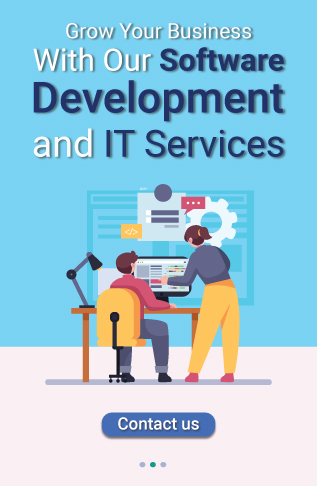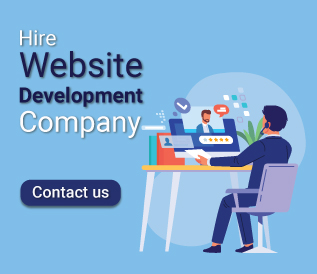Amazon is the world’s largest e-commerce store. You can find tons of registered sellers and retailers on Amazon. But what is the secret sauce to Amazon’s exponential growth? In one simple sentence- “It’s their flexible, scalable supply chain”. But what makes Amazon’s supply chains so formidable? Software development companies will say “The secret is in the code”, but we would put it more precisely- it’s 3PL software.
Table of Contents
ToggleWhat is a 3PL?

Not all e-commerce businesses or vendors can build and manage their supply chains. But that doesn’t stop them from selling products to customers or other companies. They can do so using 3PL services or third-party logistic service providers.
Think of it as an outsourcing partner who handles various aspects of the supply chain, including core services:
- Warehousing
- Inventory Management
- Order Fulfillment
- Transportation
But 3PL services, too, have their challenges! Rather, it would be right to see that they are in charge of everything that should work seamlessly for e-commerce business success.
What is a 3PL Software?
3PL software is a game-changer for logistics companies. It boosts efficiency and cuts costs, time-saving and streamlining everything. Using 3PL software a vendor or an e-commerce business can handle the following aspects efficiently:
- Orders: Manage customer orders from receiving to fulfilment.
- Tracking: Track the live status of the shipment until it’s delivered.
- Inventory: Track product stock levels across warehouses.
- Warehouse: Optimize picking, packing, and shipping operations.
- Transportation: Plan, schedule, and track shipments.
- Billing: Generate invoices and manage customer accounts.
- Reporting: Provide performance insights for improvement.
Who Uses 3PL Software?
A 3PL software is primarily used by:
- Logistics companies who manage e-commerce supply chains.
- E-commerce companies create their e-commerce fulfillment store.
The Key Benefits of 3PL Software
We can break down 3PL software benefits into 3 major categories. These include:
- Easy Scaling
- Added Flexibility and Agility
- Increased Visibility into Operations
Let’s discuss each of them in detail:
1. Scale Up Smoothly:
Scaling is key for 3PLs. This means smoothly handling growth in order processing, inventory, shipping, and delivery routes.
- With 3PL software, you can handle increasing order volume and product variety without getting overwhelmed.
- Using just the software you can manage operations across multiple warehouses and regions without a sweat.
- But most importantly you can automate tasks, optimize resources, and avoid costly mistakes.
2. Adapt on the Fly:
As the saying goes, “What is in demand is not there, what is there is not in demand.” A 3PL software helps vendors enjoy seamless adaptability.
- You can manage sudden demand spikes, seasonal rushes, or unexpected events.
- Offer customized services and easily add new features.
- Link up with different platforms (like accounting software) for a seamless flow.
3. See it All:
A 3PL software that’s the guesswork out of business. Vendors can track everything from one place, use data for decision-making, and keep their clients happy.
- The software gives you real-time updates. You can check orders, inventory levels, and shipments on the fly.
- The software offers tools to see what’s working well and where to improve.
- Plus, you can respond to customer requirements and queries more effectively.
Overall, 3PL software makes it easier for logistics companies to handle everything efficiently, adapt to changes, and provide top-notch service to their clients.
Most Preferred Software Development Company Since 2003
Request A Free Quote
98% Client Retention
3PL Software Boosts Sales Too!
When it comes to e-commerce businesses- the key differentiator is customer experience. Orders will keep coming in as long as the customers are happy. For 3PL vendors, this means ensuring the client’s supply chain is transparent, agile, and lean. A 3PL software helps you achieve these in a hassle-free manner.
To put it in simple terms- a 3pl software makes the supply chain efficient, which in turn makes customers happy, and contributes to more sales online and business growth.
Implementing a 3PL Software
Most vendors prefer to outsource their 3PL software needs. This is because in-house development is not the most efficient in terms of cost and time. In the worst case, a poorly implemented software solution impacts the bottom line and leads to client dissatisfaction.
That’s why it’s considered a wise option to hire a 3PL software development company. Here are all the reasons why.
- Domain Expertise: 3PL developers specialize in logistics software, ensuring the solution aligns with industry best practices and regulatory requirements.
- Faster Implementation: Dedicated teams expedite development and integration, minimizing disruption to your operations.
- Ongoing Support: Benefit from continuous maintenance, updates, and expert troubleshooting to ensure optimal performance with our support and maintenance expertise.
- Cost-Effectiveness: Avoid the overhead of building and maintaining an in-house development team.
- Access to Innovation: Leverage the latest advancements in logistics technology without the burden of research and development.
What determines 3PL software success?
Any off-the-shelf or custom 3PL software has multiple moving parts. These include:
- Warehouse management system (WMS)
- Order Management System (OMS)
- Inventory management
- Route or transportation management
- Invoice management (Payments and billing)
- And, accurate reporting
There are others too, but these six features are a must-have in a 3PL software solution. However, features don’t determine the success of 3PL software integration. Success depends on how seamlessly these different sub-systems of the software talk or interact with each other.
In more technical terms- “Seamless Data Exchange”. Let’s try to understand it with the help of the following diagram:

This diagram clearly shows how an order is managed by 3PL software. All key components of the delivery process are connected- where information from one is shared with another and vice versa.
A 3PL software brings all these moving parts together. It does so using EDI transaction sets and users’ preferred file formats. We will discuss these in detail-
Warehouse Shipping Order (EDI 940, XML, and other supported formats)
Once an order is confirmed, the warehouse receives a message on what to ship and where to send it. It includes crucial information like:
- Order details (order number, customer information)
- Item quantities and descriptions
- Shipping instructions (delivery address, carrier details)
- Special handling requirements
Warehouse Shipping Confirmation (EDI 945, XML, and other supported formats)
After packing the order, the warehouse sends a message confirming what was shipped. It includes:
- Confirmation of shipped items and quantities
- Tracking information
- Any discrepancies between the shipped items and the original order (e.g., backorders, substitutions)
Data Formats:
A 3PL software supports various data formats like EDI, XML, and JSON. These formats are like different languages used to share the same information.
EDI 940 & EDI 945:
These are specific types of EDI messages used in e-commerce fulfilment.
- EDI 940: Imagine this as a “to-do list” sent to the warehouse. It tells them which items to pick and pack for an order.
- EDI 945: This is like a “confirmation email” sent by the warehouse after fulfilling the order. It shares shipment details like the items, quantities, and tracking numbers.
3PL Software’s Role:
3PL software can understand EDI 940 and EDI 945 messages. It can also support formats like XML or JSON. This allows it to be flexible and agile.
- Receive orders: When you send an EDI 940, 3PL translates it into a format that the WMS can understand. It tells the warehouse team what to pick, pack, and prepare for shipment.
- Confirm fulfilment: When the warehouse ships the order, they send an EDI 945. 3PL translates it and updates the vendor system with the actual items shipped and other relevant details.
Equally important is testing and validating!
Thorough testing and validation are crucial to ensure smooth operation. This involves:
Trying it out:
- The 3PL and its partners send practice messages to each other.
- This checks if the messages are sent and received correctly, and if the systems understand each other.
Fixing any errors:
- Any problems with the messages or systems are identified and fixed before using them for real.
- This ensures everything runs smoothly when it matters.
Facing problem with your logistic issues?
Get your customized 3PL software solution with DreamSoft4u.
Why DreamSoft4u as your 3PL Software Development Partner?
DreamSoft4u has 10+ years of experience in 3PL software development solutions. We have worked with diverse vendors in the logistics industry, including e-commerce.
Our services go beyond 3PL development and implementation. On-going support is an essential element for EDI success. That’s why we offer post-development support for
- Troubleshooting data transmission errors, or mapping inconsistencies.
- Updating data mapping configurations based on changing requirements.
- Continuous EDI performance monitoring to address potential issues.
Partner with us and maximize the potential of your 3PL operations
Remember, DreamSoft4u is one of the most trusted E-commerce Fulfillment Software shops. Here’s why partnering with us is the perfect way to meet your 3PL software needs:
- Proven Results: 90% of our clients saw efficiency gains and error reduction after implementing our 3PL software.
- Rich tech stack: We leverage the latest technologies (IoT, Cloud Security, AI, and more)
- Adaptability: Our solutions are easy to upgrade and scale.
- Cost-Effective ROI: 80% of our clients achieved 30% higher ROI within the first year.
- Unwavering Support: We ensure smooth operation and address any concerns.
3PL Software Solutions: FAQs
Q1: What are the benefits of EDI 940 & EDI 945 Integration?
EDI 940 & EDI 945 are standardized formats for e-commerce fulfilment. So using them offers tons of benefits. The primary ones include:
- Lesser (nearly zero) need for custom data mapping.
- Accurate inventory management and fulfilment.
- Real-time visibility into order status and shipment details.
- Easy integration with trading partners and warehouses
- Security measures like encryption and data integrity checks
However, EDI integration is only one of the many data formats that you can support. Our 3PL solutions map your data into desired formats like XML and JSON too.
Q2: What is the experience of your 3PL software developers?
Our development team has 10+ years of combined experience. We are well-versed in the logistics industry. We have strong expertise in various EDI standards like EDI 940 EDI 945 and others.
Q3: What exactly is E-commerce Fulfilment Software?
Software is at the heart of today’s e-commerce businesses. As a business owner or a 3PL vendor, an e-commerce fulfilment store will help you:
- Keep track of the inventory levels.
- Manage orders across diverse sales channels.
- Optimize warehouse order picking, packing, and shipping.
- Find the best routes, and view shipment status in real-time.
- Efficiently handle return requests and expedite replacements or refunds.
Think of it as your partner taking care of everything after someone buys from your online store.
Q4: What are the time and cost estimates for a 3PL project?
Project time and costs are variable. They depend on factors like business needs, mapping complexities, and data governance rules or compliances. We can share a fair estimate once we have your requirements and expectations in mind. You can send us an inquiry by visiting our Contact Us page.





















